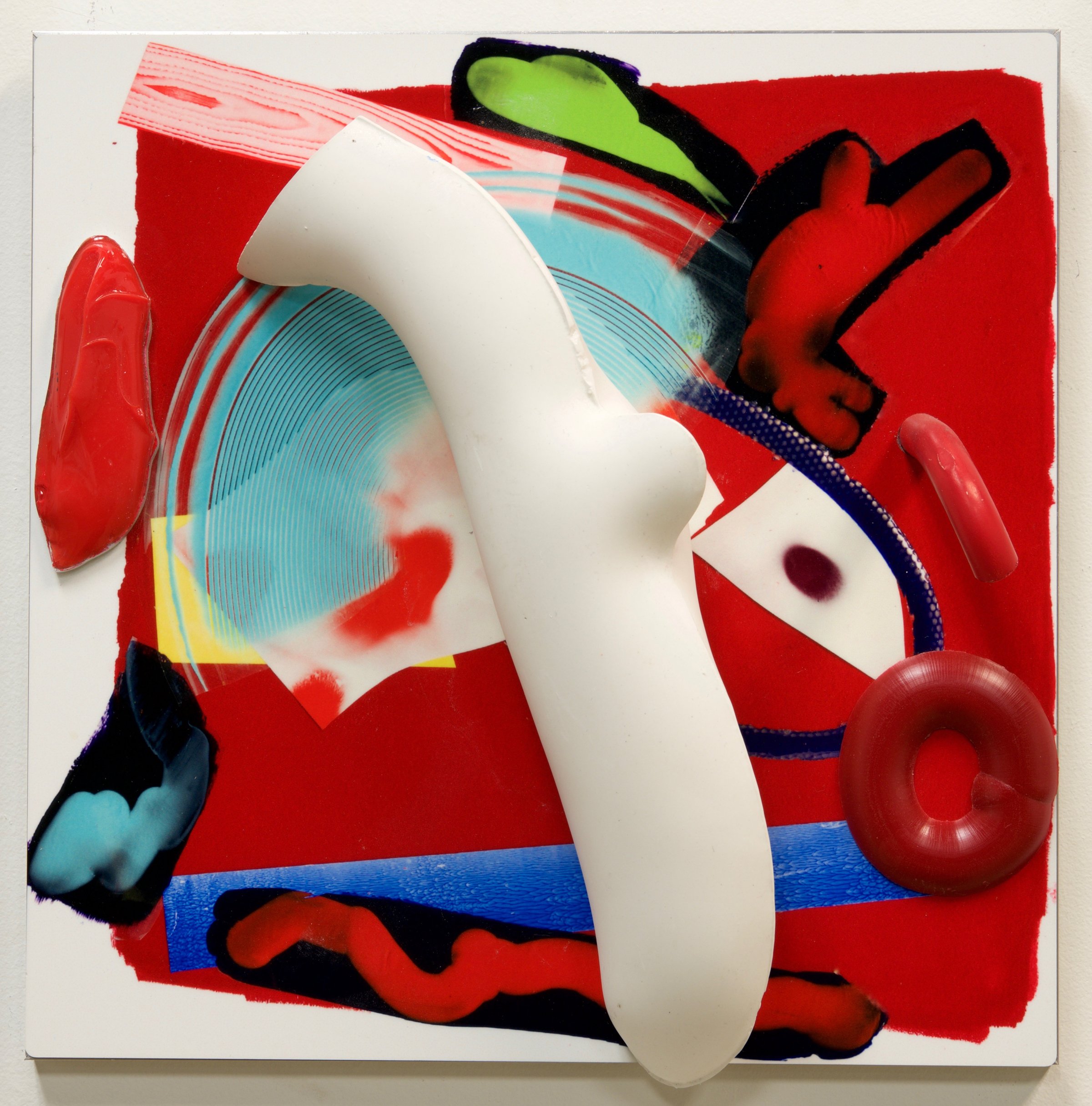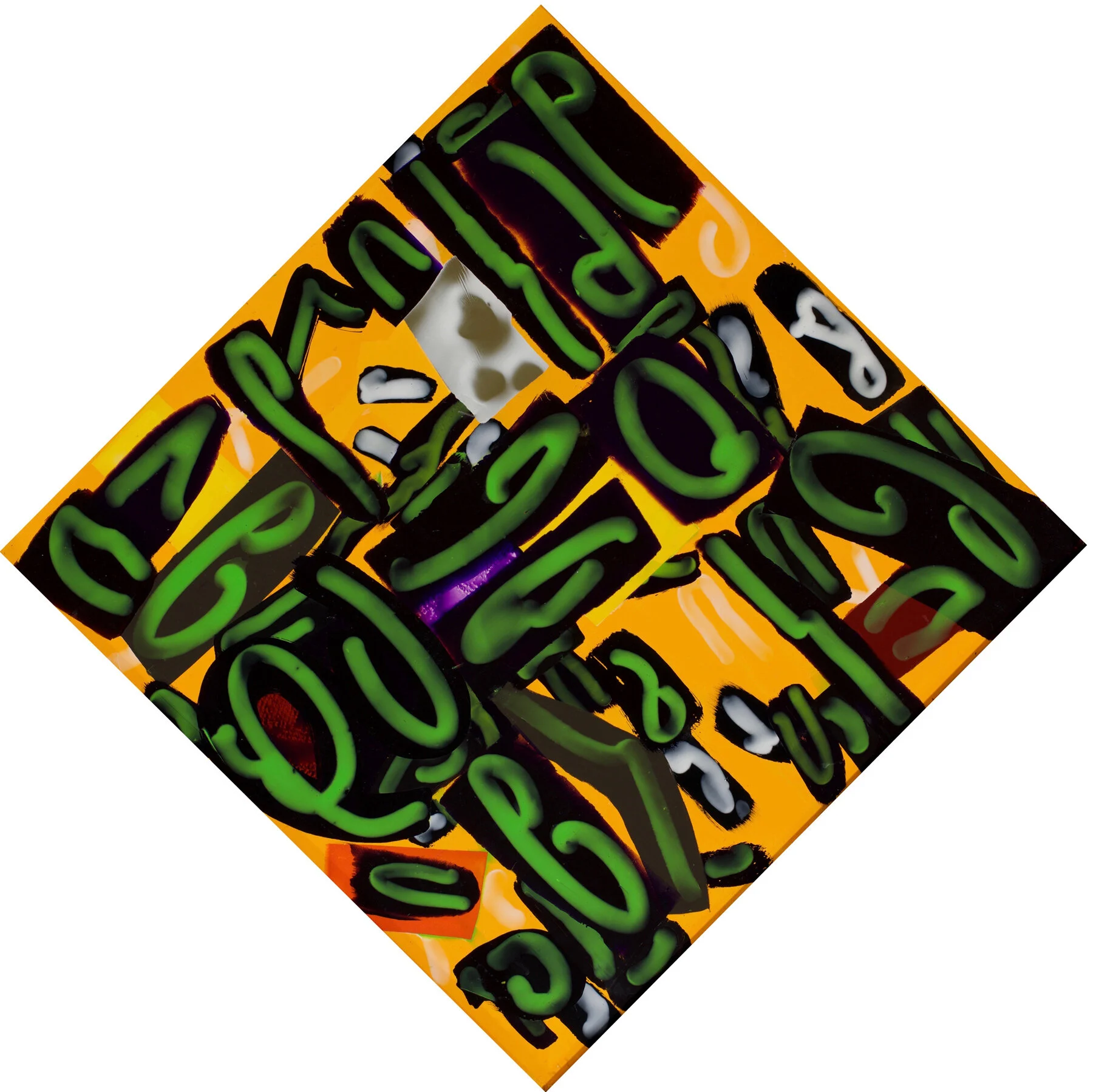Peter Robertson Gallery, Edmonton, 2014
“While Clay Ellis often titles his sculptural paintings after personal encounters with the ranch land of his youth in Medicine Hat, AB, a central irony is that they actually look nothing like nature. Oddly, his art reminds one of art itself, nostalgically early-wave modern.
It’s created in no straightforward, traditional fashion, either – polyurethane is stencilled, melted and painted on both translucent sides, then affixed and painted into a larger canvas. Moulds create what looks like huge squeezes of paint – another reference back to art. And Ellis doesn't even have a name for the invention – essentially a behemoth spirograph – that he uses to carve shapes and paint giant ovals on his canvas ‘skins.’
To be fair, the 58-year-old jovially says he’s not trying to impose a certain time or Alberta panorama on those who view his vibrant physical collages. Each is almost comically confident and self-contained, though this survey show has a familiar alphabet of curves, polka dots and microscopic patterns.
Led by Ellis’ clues, it’s easy to imagine farms, rivers, poultry and animal carcasses amid great canvases that at first glance look more like edible condiments enlarged under a microscope. But while his blood reds and radioactive greens are linked to his memory, this leads to a key point: despite opining that the narrative is unnecessary, Ellis will supply it as if he has just stepped out of the barn that electrified him in his youth. As with his techniques, the more you learn, the more you like.
Take the delicious Bunkhouse Wall / Weather Report, inspired by memories of painting large-scale 1970’s album covers on walls with his siblings – a nascent moment of rural graffiti that clicks with the adult’s modern street palette.
One of his least-complicated pieces, the three-foot-square Banty, beams the best of Ellis’ techniques of stencil, lace and warped plastic. Endearingly, the lumps, monochromes and allusions to feathers almost let us hear the chicken clucking in its pen. Representational? Only if you concentrate.
And his giant, six-panel opus The Last Oxbow – moved here from an installation-heavy conceptual show of video loops and steel structures earlier this year at the Art Galley of Grande Prairie – summons an impossible mash of conflicting visions: Gothic church arches and McDonald’s; a river snaking along a landscape of dried blood; the peace of lying in the hay under a blue sky.”
— Excerpted from a review written by Fish Griwkowsky, Edmonton Journal


































































































































